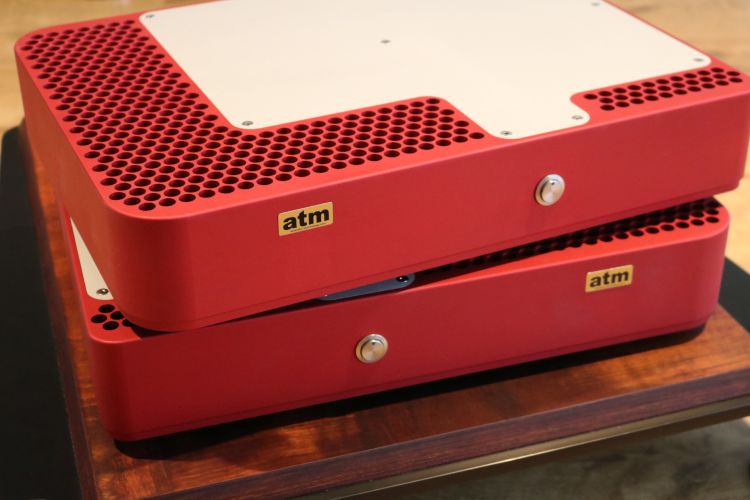
Review sample supplied by atm-audio
Retail price: 10.195 euro pp / 20.390 a pair (ex VAT)
I first heard of atm-Audio at the 2019 HifiLive audio show in Valencia, Spain where the Spanish brand’s electronics were showcased along with Bonysound Symphony II loudspeakers, also from Spain.
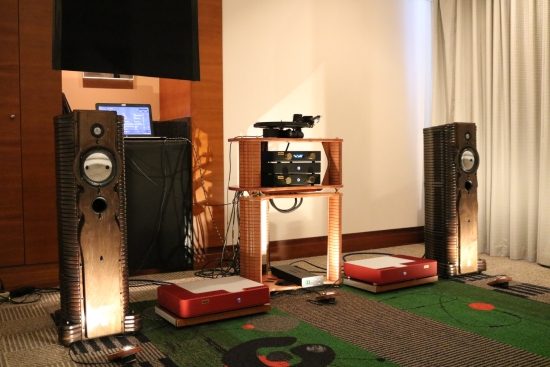
At the Valencia show, showcased were the PAM-2 preamp, PPM-1 phono stage and PDAC1 DAC which are all housed in very small but precision-made full-aluminum enclosures. The mono power amps that were demoed are also made of solid aluminum but full-size and rather heavy.
Based in Valencia, atm-audio has been dedicated to the manufacture of high-fidelity equipment since 2006. Their specialty has been Class-D amplifiers based on Hypex NCORE modules, both in stereo and multi-channel. However, they also manufacture line preamplifiers, phono preamplifiers, DA converters and pure class A power amps, such as the EPM1 stereo model or the new EPM-50 mono amplifiers that were introduced in Valencia and are now the subject of this review.
At this show, the system as a whole produced a sound that showed parallels with other speakers that use Accuton ceramic drivers, which is to say extremely precise, articulate, coherent and transparent. It was highly refined but certainly not a warm and cuddly or rose-tinted sound. At that time, not having heard the atm-audio electronics separately, I assumed that the electronics, as well as the speakers, contributed to this sound signature. As it would turn out, I was going to be in for a surprise.
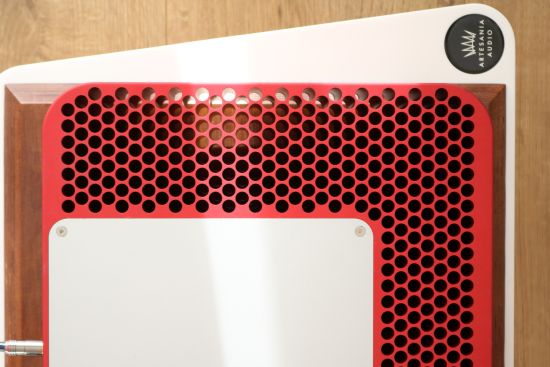
The chassis is made of a single slab of aluminum, CNC’d to fit the electronics in pockets that are fit precisely for the components’ sizes. Uniquely, the heat sinks are integrated into the same aluminum chassis. The power transistors are bolted to the chassis that very evenly conducts the heat to the side where dozens of precisely-placed holes silently cool the amplifier via the convection method.
Due to the large mass of the aluminum chassis together with the large number of evacuation holes, the thermal drift is very large and the temperature of the equipment will not exceed 50ºC after 4 hours of non-stop operation. The manufacturer has carried out extensive heat emission tests and goes on to state that there is no amplifier on the market of this power, that works in class A, that has a chassis of only 10 cm in height and that does not exceed that temperature.
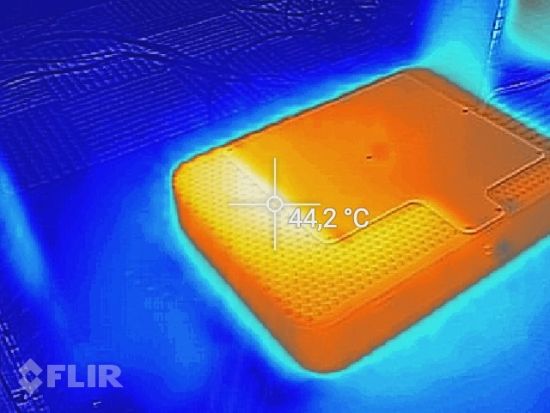
atm-audio on the web
When searching for atm-audio products, the search engine may insist on directing to cash machine pages when using only the first three letters… The trick is to search for the brand’s full name – “Acoustic Technology mfg” or atm-audio which leads to the website atm-audio.com.
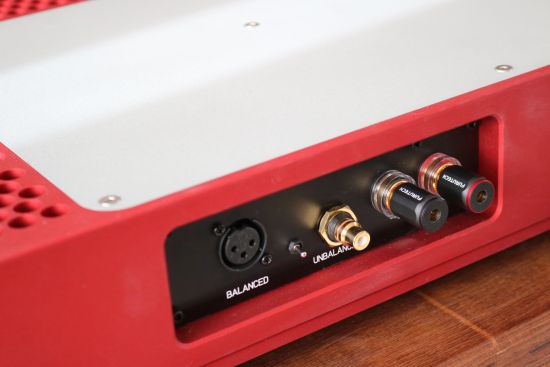
Technical
The EPM-50’s are full Class-A mono power amplifiers. There is no sliding bias and no hybrid technology, just pure and simple Class-A technology. With a 250-Watt low-noise toroidal transformer and MLytic series Mundorf electrolytic capacitors at its basis, the amplifier uses all-discrete A-brand name circuitry and 6 power transistors to deliver 60 Watts of power into 4 ohms via its Furutech speaker terminals.
My review samples are pre-production types and the final versions may include some tweaks. For instance, the chassis’ matte finish is absolutely gorgeous but sensitive to dust and this is something I’ve been told will be addressed in the final versions.
While my samples have an interesting two-tone color option, the final production samples will have a unified color. That doesn’t mean that they will be less interesting as the products will be available in a wide range of colors among which black and silver but also blue, red and champagne. Especially the latter two are very fetching and I wonder how the red chassis will look with champagne top panels. The red finish of the review samples sure is beautiful and the amps elicited lots of praise from visitors for their beautiful looks.
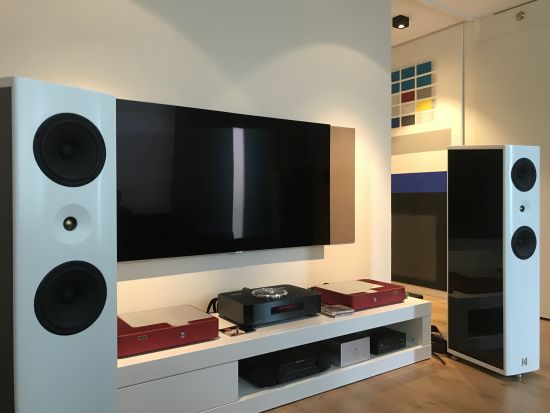
Listening
Because my smaller system had two vacant spots after a previous review and currently contains the equally Spanish Kroma Audio Carmen speakers, I felt it fitting to start my assessments there. In this system, the Carmens are driven by an Ayon Spirit III integrated KT-150 tube amp with an Antipodes EX music server feeding an Ayon CD-10 MkII CD player and DAC. The speaker cables and interlinks are all made by FoilFlex and the power cables are all Belden 19364.
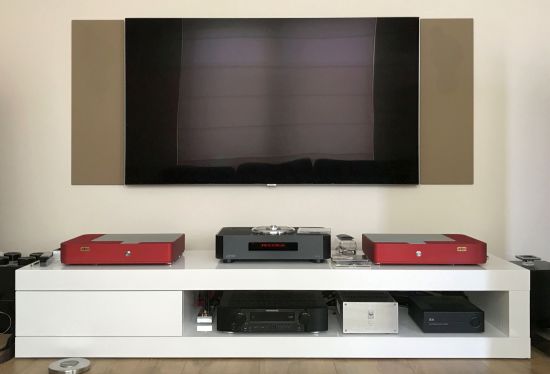
I compared the amplifiers’ cinch and XLR inputs using the same type of FoilFlex cables and found that both inputs provided similar levels of detail and transparency but that the XLR inputs sounded more full-bodied and more 3D while cinch was comparatively flatter, but arguably also tighter. Even if I normally chase after tightness, in this case, the sound via XLR was emotionally more engaging and therefore the performances more convincing. However, I should note that in later comparisons in the other system, I heard very little difference between the amps’ inputs. Therefore, this definitely has more to do with differences between the CD10’s cinch and XLR outputs.
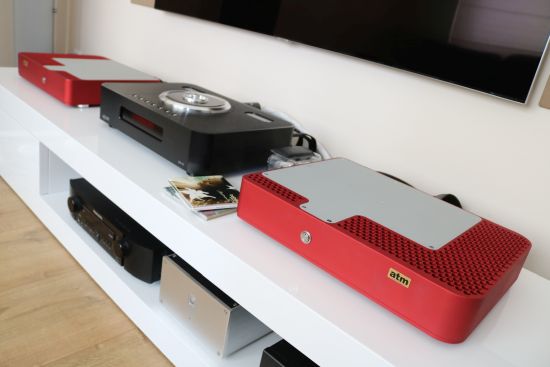
The secondary system’s room is not very large – it’s actually a little too small, especially for big speakers such as the Carmens. But, amazingly, they turned out to work very well. While I know that these speakers can sound cleaner when given more space, with the exception of some unneeded room gain in the lowest frequencies, the sound is well balanced, intimate, richly textured and there is a surprisingly large soundstage that extends to beyond the front wall. After having listened to a range of tracks using the Ayon Spirit III, I replaced the latter with the atm-audio EPM-50’s and connected them directly to the Ayon CD-10 MkII CD player/DAC. That’s a nice feature of this player: not only does it have USB and other digital inputs, it also has a volume control, allowing for a minimalistic system.
The EPM-50’s have seen plenty of use by the manufacturer at several shows. After delivery they were stone-cold, and so, I allowed them several days to come on room temperature but they had not yet been switched on. I needn’t have worried. Even when just fired up, they immediately impressed me with their liquidity and rich tonality. This was very far removed from the calculated sound that I was expecting. I should note that literally every other transistor amp that I listened to after having used the Spirit III, sounded particularly “transitor-y”. But with the atm-audio EPM-50’s, it was like the tubes had never left the system!
There was a very similar flow and richness, similar soundstaging and even the textures were almost as saturated. The amps performed the unusual trick of sounding relaxed while being able to upscale the tempo and dynamics just as the recording required. It was like there was a constant flow of energy even when there was little going on in the mix, always calm but always ready to burst out. Tonally, the EPM-50’s were more vibrant than any other transistor amp that I heard before while possessing of bass that was just as full-blooded as with the Ayon but cleaner and better controlled. A remarkable mix that the amplifiers also pulled off was to sound almost as saturated, organic, harmonically rich and texturally complete as the tube amp while being much more linear and transparent.
Tube aficionados know how near-impossible it is to get transistors to attain tube-like qualities. And when they do, this usually results in an overly creamy and rounded sound that more mimicks bad output transformers than actual tube magic. Not here!
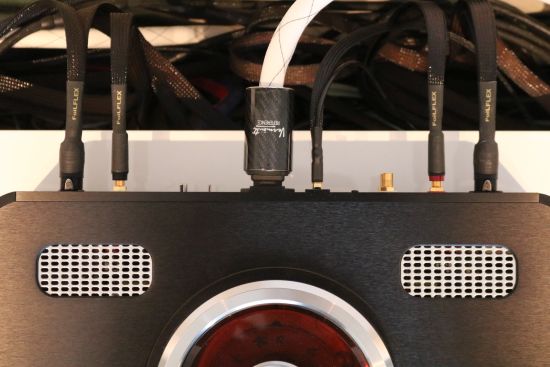
FoilFlex interlinks and Vermouth Reference power cable
The more I played and the amps warmed up, the more I was perplexed. Although the Ayon CD-10 MkII was used at full output power (it can be attenuated for direct power amp use) resulting in some tube noise to be heard when no music was playing, I had no intention to change anything because this minimalistic system was working so magnificently and the amps, speakers and source were clearly playing to each other’s strengths. This was a very natural and highly realistic sound with an almost magical allure, lifelike timbre and dynamics and the kind of involvement that makes one want to keep listening for hours on end.
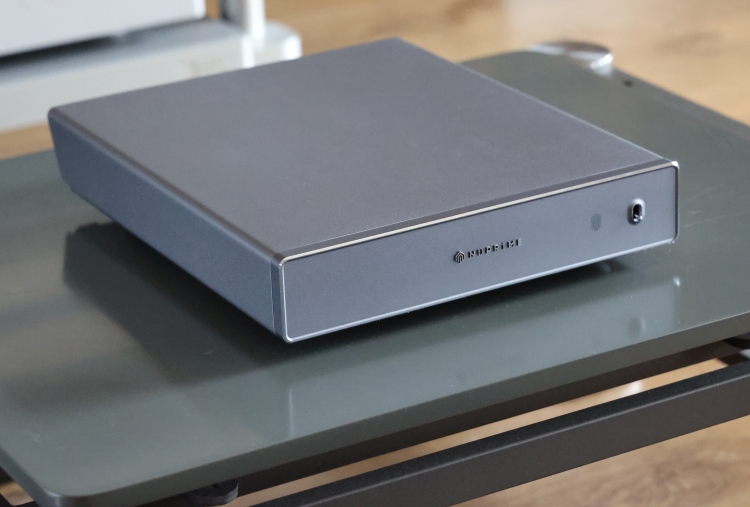
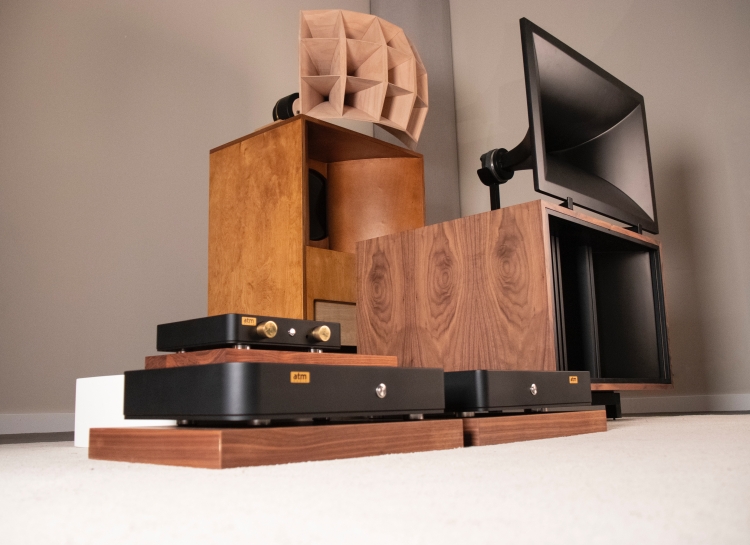
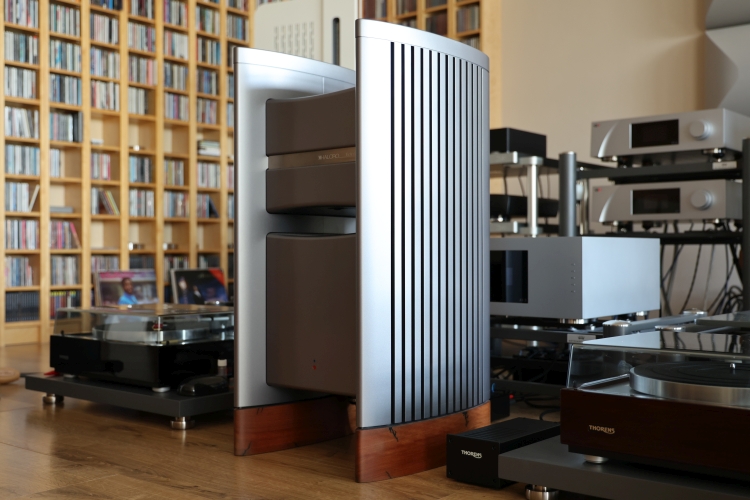
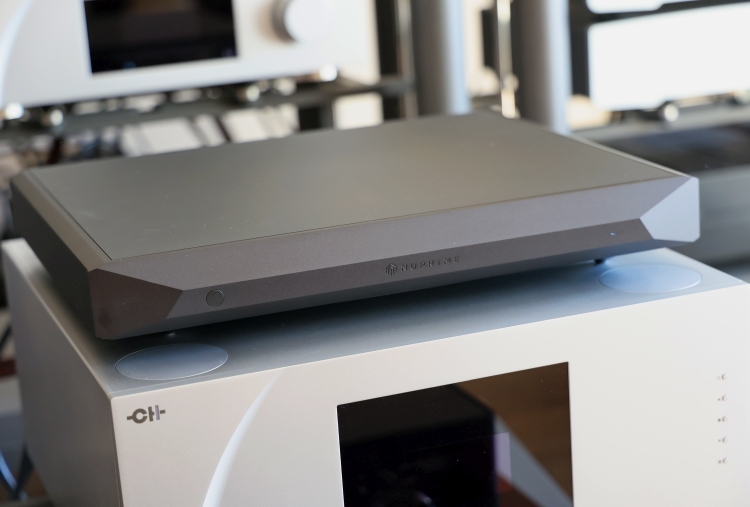
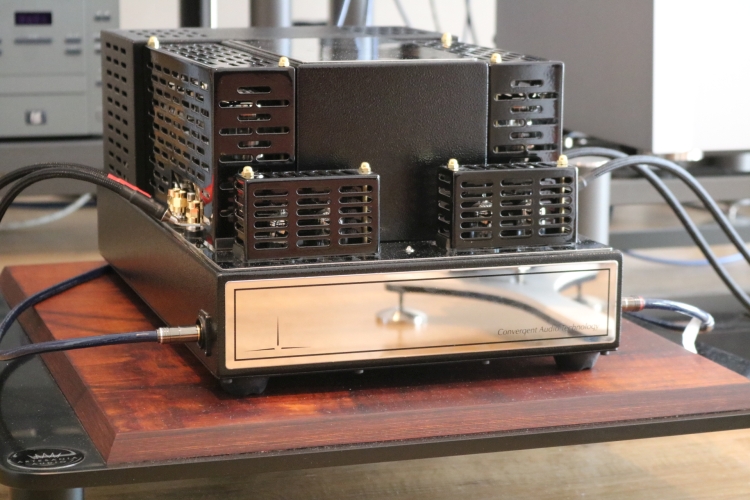
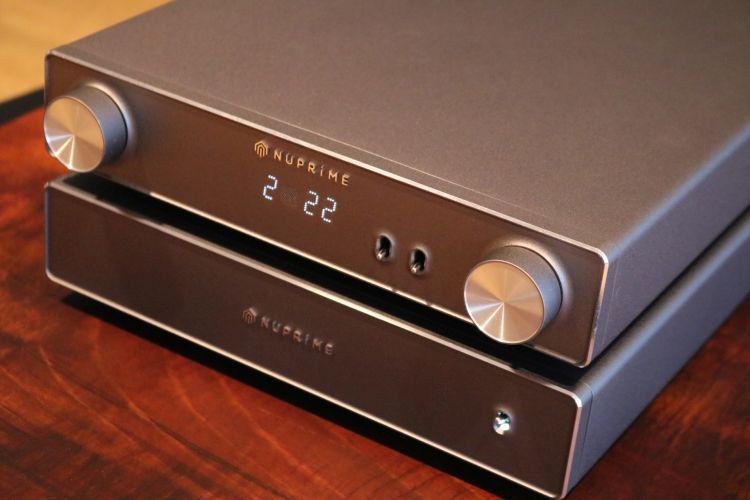
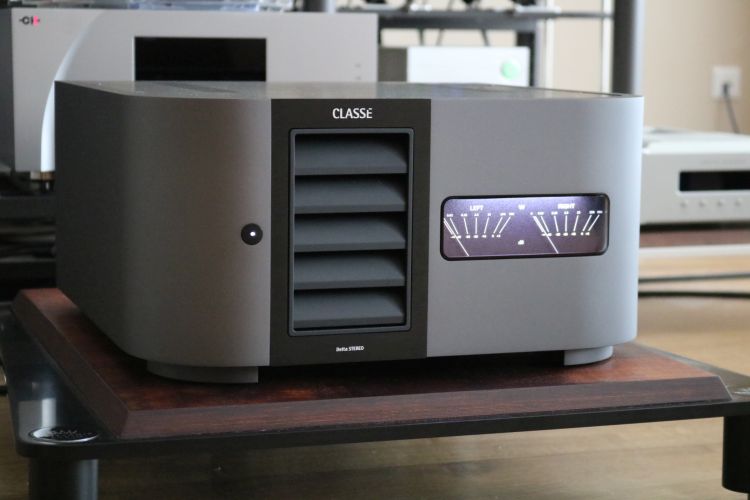
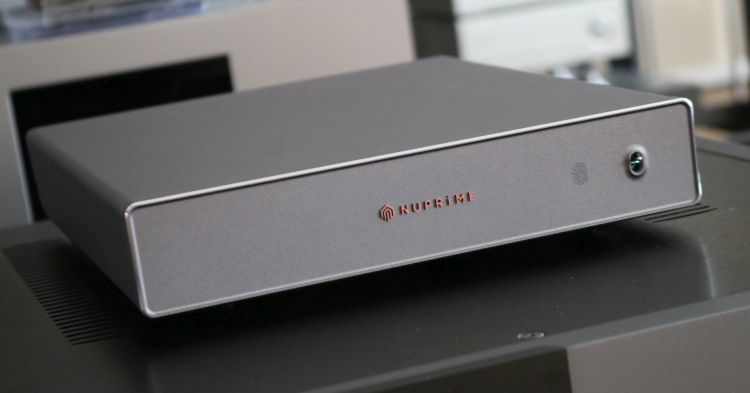
Hello Mr Punter,
First, a note of thanks for doing such in-depth reviews of audio equipment, many of which we have never heard of in Canada.
What interests me is not so much the equipment you’ve been reviewing, but your whole approach to reviewing equipment. Let me be specific.
1. With what’s happening in the world today, with global warming, climate change, and the man-made destruction of the environment, is there still a place for Class A amps, amps that waste so much energy to bring us…an emotionally involving experience? We’re all being asked play our part to slow down climate change. Why are so many hi-fi companies still stuck in the past? Why are they not being called out? Is this compartmentalization for audiophiles? Some things we’re glad to change at the drop of a hat to save the world, but when it comes to stereo equipment, it’s Class A all the way?
2. Why do certain equipment get more ink than others? Some gear gets one article, others get two or three parts.
3. If you had $100,000+ disposable income to buy audio equipment that takes up half of a large room, would you rather not use the money to go to live concerts? Isn’t the point of audio equipment to create an illusion of the real thing? But when you already have one of the best orchestras in the world–the Concertgebouw Orchestra in Amsterdam–would you not be a regular subscriber to live the experience? Is this a case of being at the Niagara Falls and yet you need to take photos, and somehow feel that the photos give a more emotionally involving experience?
4. Because most of the equipment you review is beyond the budget of the average audiophile, does this website mainly target the wealthy and super wealthy?
5. Do you think you’ll ever put together a budget system or a mid-fi system?
I would appreciate your thoughts on these questions. Thanks.
Hi FS, I feel that everyone should form their own opinions and decide for him/herself which amplifier best suits their needs. I don’t want to get into political arguments but I will say that Class-A does not necessarily consume more power than Class-A/B. My high-bias A/B Jeff Rowland model sixes, for example, used 225 watts per side which is more than the atm-audios consume. Many big AV amplifiers also consume similar amounts of power, as do plasma TVs and even certain LCD/LED ones, if they are very large. The legislation will make sure that energy consumption across the board will keep decreasing but I will also say that the very small percentage of audiophiles that have relatively power-hungry equipment is perhaps not worth focusing on in the grand scheme of things.
The length of any article is just how it pans out. I never start on anything with a certain amount of text in mind. Sometimes I have more inspiration than other times, sometimes what I encounter makes me think of something else which I then also include in the review. It also happens that something may work well in one situation and not in another. In such a case I need to do more digging for a well-balanced opinion. I will then change the circumstances or take items to friends’ systems.
My articles are aimed at anyone who likes to read them and/or is serious/dedicated enough to invest in such equipment. And that does not need to mean one has to be super-wealthy. Actually, I think that really wealthy people probably don’t read a lot about their potential purchase before buying. More likely, they go to their dealer and follow up their advice.
I am certainly not wealthy myself, I just make sure to set my priorities just so. I fund my items with loans, the same, I guess most people do when buying a new car. Why is it acceptable to buy a 30.000 euro/dollar car but not a 30.000 amp? The audio equipment likely holds its value better than the car.
Since this site is more a labor of love than a job (my full-time job pays the bills) I tend to write about what interests me most. That keeps it fun. However, every now and then, I do get bitten by a bug from the past and I then dive in deep. For instance, this resulted in the classic transport masterpieces, the Technics Linear Turntables article and, of course, the large section covering classic Philips and Marantz players.
Finally, I do write about what I regard as entry-level high-end when I feel that the product has a very good price/performance ratio. The Jay’s Audio, Denafrips, Line Magnetic, Thorens and Lejonklou are recent items that spring to mind.
Well said Christian and as always a great informative entertaining review!